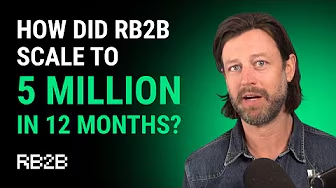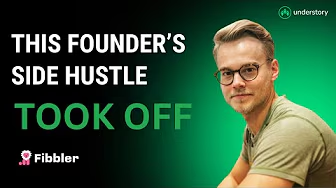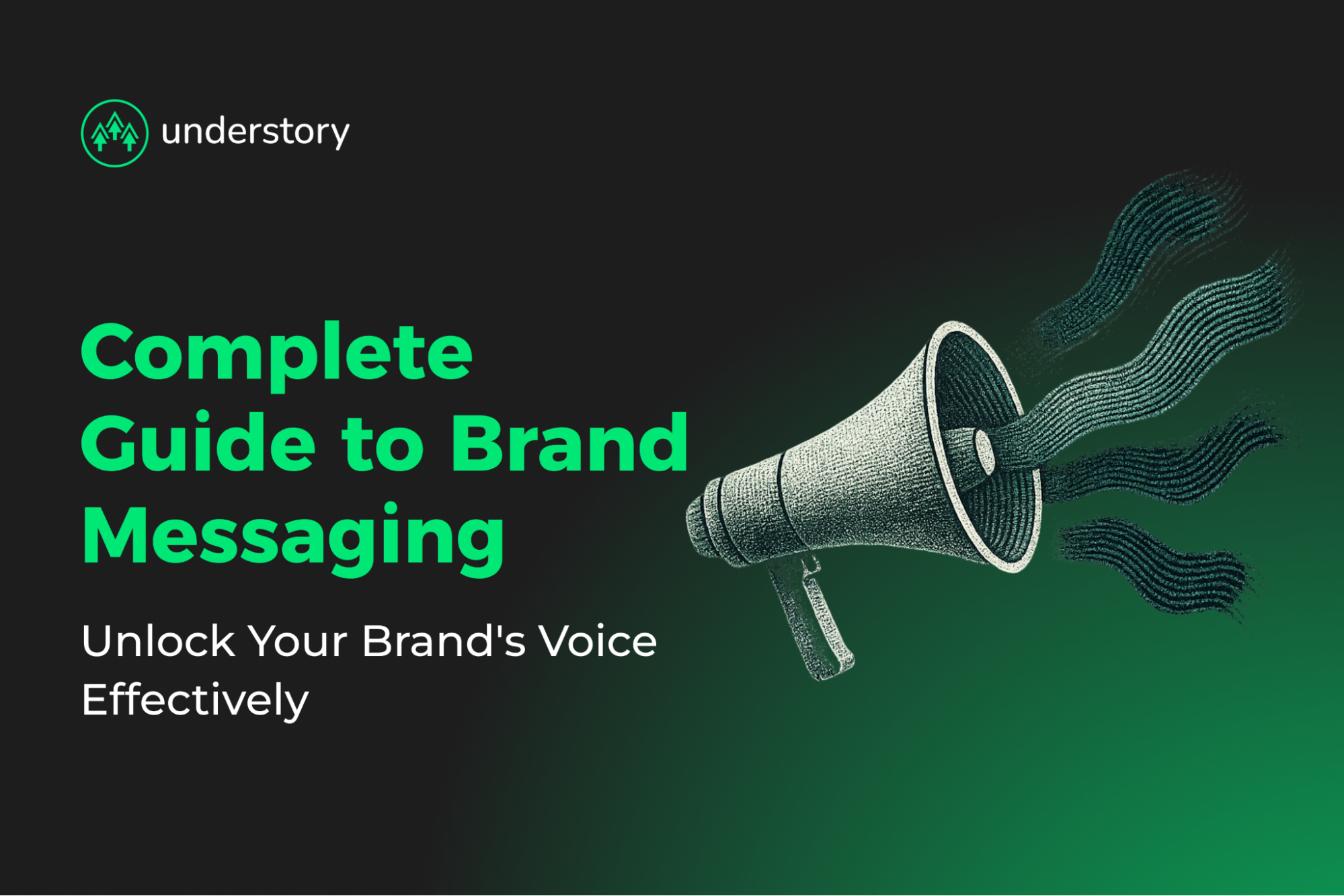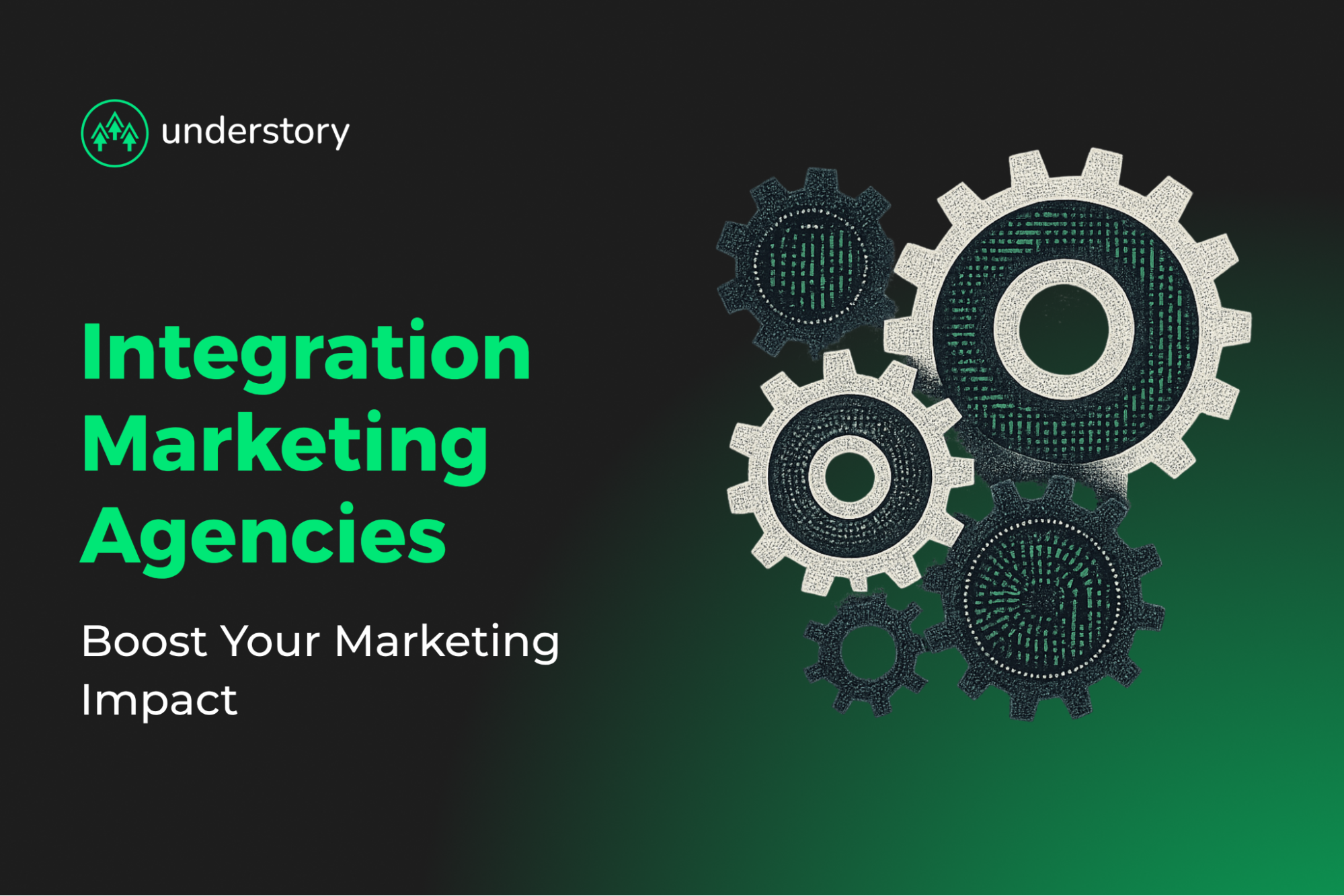
Understory Unfiltered: Stuck at $3M ARR? Here's how to break through to $25M+
Catch up on our Understory Unfiltered episode with Adam Robinson about improving your ARR when it plateaus
Catch up on our Understory Unfiltered episode sharing the story of HockeyStack
Emir Atli, CRO and co-founder of HockeyStack, built his attribution and analytics platform for over a year without a single customer, spending three years total building the data layer. Now his Series A company tracks everything from marketing attribution to product usage, powering decisions for their own rapid scale and hundreds of B2B clients.
In this recap, we take a closer look at how extreme ownership between co-founders eliminates committee decisions, why HockeyStack moved to San Francisco with only five customers, and how LinkedIn content strategy drives a meaningful pipeline when founders stay authentically involved in execution.
Emir is the CRO and co-founder of HockeyStack, a Series A attribution and analytics platform that tracks everything from marketing attribution to product usage for B2B SaaS companies.
Before finding product-market fit, Emir and his co-founders spent three years building their data layer foundation while learning sales, fundraising, and go-to-market execution from scratch. Today, HockeyStack serves hundreds of B2B clients while running their own rapid scaling through the same attribution platform they sell.
[01:00] Three years building without customers: from failed product analytics to attribution platform
[06:04] IPO ambitions over acquisition exits: HockeyStack's long-term vision
[09:53] Force multiplier decisions: planning six to nine months ahead to avoid feeling late
[11:31] Getting into YC with 25-30 customers and leveraging the network for everything
[16:29] Emir's master-level sales journey through pure execution and accountability
[18:40] Extreme ownership: three co-founders dividing control while maintaining speed
[22:16] Sales-led over product-led: rejecting the lean startup myth for enterprise B2B
[26:25] Running the entire business through their own attribution platform
[27:12] Authentic founder-led content that drives pipeline without acting coaches
Building without customers for three years isn't failure—it's deep technical foundation work. HockeyStack spent over three years building their data layer before landing their first customer. "We built that for like a year almost, maybe a little over a year, without a single customer. So we were building, trying to sell, but weren't successful. But we spent in total like three years building just a data layer of Hockey Stack," Emir explains.
This extended development period created the robust technical foundation that now powers their attribution platform. For SaaS founders, substantial pre-customer development time can create competitive moats in complex technical products where data accuracy and processing speed become core differentiators.
Fundraising success comes from not needing money, not from desperation. HockeyStack's Series A happened because VCs knocked on their door after seeing consistent growth updates, not because they pitched frantically with six months of runway. "Most successful rounds happen when you basically raise it around when you don't need it, pretty much," Emir notes. Their approach involved sending monthly updates to existing investors showing pipeline revenue growth, challenges, and runway.
When VCs see companies growing sustainably without needing capital, competitive dynamics naturally emerge. SaaS growth leaders should focus on building strong unit economics and extending runway before fundraising, using investor updates as relationship-building tools rather than funding requests.
Extreme ownership eliminates committee paralysis while maintaining founder trust. HockeyStack's three co-founders each own complete decision-making authority in their domains: go-to-market, engineering, and product/customer success. "In the go-to-market side, the final decision is mine and engineering final decisions by our co-founder and CTO and customer success product vision, the final decision by our co-founder and CEO," Emir explains.
This structure accelerates execution because decisions don't require consensus, but it demands complete accountability. When something fails, the responsible founder owns both the failure and the fix. For scaling SaaS companies, this model prevents the decision bottlenecks that slow growth while ensuring founders remain deeply involved in their expertise areas.
The lean startup myth breaks down for enterprise B2B software companies. While trendy tools might create significant revenue with small teams temporarily, sustainable B2B software requires traditional scaling approaches. "If you're building an enterprise B2B software company, it's kind of impossible to do that," Emir states about the lean team approach.
HockeyStack chose a sales-led model with dedicated specialists across cold calling, cold email, and paid media. They maintain lean operations by hiring only the best performers in each role rather than trying to minimize headcount. SaaS leaders should focus on efficiency per person rather than minimizing people, especially when serving enterprise customers who expect comprehensive support and proven processes.
Force multiplier decisions require six-month forward thinking to avoid feeling late. HockeyStack makes major investments like office space and team expansion based on what capabilities they'll need in six to nine months, not current needs. "The number one thing that I hate is the feeling of being late to something. So then we basically do everything to avoid that feeling," Emir shares.
This approach led them to secure a large San Francisco office before they needed it, creating space for the team growth they anticipated. For SaaS growth teams, this framework helps distinguish between nice-to-have investments and force multipliers that enable future growth phases.
YC provides lifelong decision-making support, not just initial funding and connections. HockeyStack leverages their YC network for every major business decision, from fundraising to product strategy to operational challenges. "Whenever we had a problem right now for example we also did the same thing yesterday as well no matter how late or early in your journey. YC is a community where you can go to anyone in the world to ask for advice," Emir explains.
They entered YC with around 25-30 customers already, making them a resource for other batch companies while gaining access to successful alumni. SaaS founders should view accelerator programs as long-term advisory networks, maintaining active relationships throughout their scaling journey.
Authentic founder-led content outperforms professional production in B2B marketing. HockeyStack tried hiring professional actors for video content and saw it completely fail, while founder-created content consistently generates significantly higher engagement. "We hired actors once and it completely flopped. So like we, you probably didn't even see it because it had like five, six thousand impressions," Emir notes, comparing it to his personal content reaching 300,000 impressions with other commercials reaching between 100,000 to 250,000 impressions.
Their LinkedIn strategy involves daily posting from founders, creating authentic connections with prospects who become customers. For B2B marketing teams, this highlights the importance of founder involvement in content creation, where authentic expertise and genuine personality resonate more than polished production values.
Using your own product for company decisions creates authentic customer empathy and product development. HockeyStack runs their entire business through their attribution platform, from investor updates to daily marketing decisions to product usage analysis. "Everything is kind of running on HockeyStack. And now we are getting to a point where we action from HockeyStack too. audiences, Alpons, everything, hopefully at one point we'll run from HockeyStack," Emir shares.
They track product adoption by feature monthly, measure customer success metrics, and build all-hands presentations using their own data. This approach ensures product development stays connected to real user needs while providing authentic case studies for sales conversations.
Revenue pipeline determines everything else: fundraising success, team morale, and strategic decisions. HockeyStack's entire operational philosophy centers on pipeline revenue as the primary metric driving all other business functions. "Anything and everything at a company relies on revenue including fundraising including people's morale including your office including your team spirit culture values everything relies on pipeline revenue," Emir emphasizes.
This focus means marketing, sales, and product decisions all get evaluated against their impact on revenue generation rather than vanity metrics or theoretical frameworks. For SaaS growth leaders, this provides clarity for resource allocation and priority setting, ensuring growth initiatives directly contribute to sustainable business outcomes.
Founders must stay operationally involved to maintain company momentum and culture. The worst periods in HockeyStack's history occurred when founders stepped back from hands-on work in their responsibility areas. "The times that went horrible and the worst times of HockeyStack were the ones when, if you would ask me when is the last time that you were in a sales call or you watched a sales call and I would say two or three weeks," Emir reflects.
Similarly, when technical co-founders stopped coding or reviewing code regularly, engineering momentum declined. This operational involvement enables founders to document processes for delegation while maintaining quality standards.
Ready to build your own attribution and go-to-market strategy? Listen to the full episode on Spotify | YouTube and subscribe to Understory's podcast for more insights on SaaS scaling and revenue attribution.
Want expert help coordinating your paid media, outbound, and creative without the specialist coordination overhead?
Book a call with Understory to learn how we eliminate the complexity of coordinating multiple marketing specialists.

Catch up on our Understory Unfiltered episode with Adam Robinson about improving your ARR when it plateaus

Catch up on our Understory Unfiltered episode sharing the story of Fibbler

